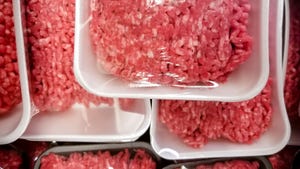Best risk strategy options for cattle producers
June 27, 2016

“So far this year, the U.S. cattle feeding sector is not following the last year’s path, which set the stage for the cattle price collapse during the last few months of 2015,” analysts with the Livestock Marketing Information Center (LMIC) explained in early June.
They’re referring to the long-day, overdone fed cattle and slower harvest rates that created a tonnage bubble, crashing prices as packers took a heavier hand in managing inventory. Obviously, that wasn’t the intent of cattle feeders who were doing all that was possible to dilute losses.
Currently, increased harvest rates, decreased carcass weights and the declining percentage of Choice-grade cattle suggest cattle feeder marketing is more current.
“Cattle feeders are not delaying marketing of slaughter-ready cattle like they did last year,” LMIC analysts say. “The economic incentives, like very high feeder animal compared to the fed animal price that led to delayed marketing of slaughter cattle, are not in place this year. The results are fed animals being marketed at a much higher rate than a year ago. Important consequences of the increased feedlot marketing rate have been year-over-year declines in steer dressed weights and increased steer slaughter levels.”
Derrell Peel, Extension livestock marketing specialist at Oklahoma State University, said in late May, “Though feedlot inventories are now above year-earlier levels and climbing, the industry is in better shape: leaner and more agile going into larger cattle supplies for the remainder of the year.”
In the middle of June, LMIC forecasts the fourth-quarter price for feeder steers (700 to 800 pounds) as $146 to $150 per cwt. The forecast for fed steers at the middle of June was $123 to $126.
Likewise, the June World and Agricultural Supply and Demand Estimates raised the top end of the price range for fed steers in the fourth quarter by $4 to $119 to $129, compared to the May forecast. Projections for next year were unchanged at $118 to $128.
Although beef production continues to increase, pressuring prices cyclically, all of this gets at part of similar, recent conversations along the lines of: “How do we manage price risk with price inversion this fall?”
Yikes.
Entertaining the thought that fed cattle prices could be higher than feeder and calf prices underscores the level of current market angst.
For the record, anything is possible, and cattle feeders will work hard to buy back as much margin as possible. But, checking around with several trusted agricultural economists, there is no fundamental suggestion of looming price inversion.
It’s the second part of the question that’s more vexing — how to manage price risk amid gut-wrenching volatility, as feeder cattle futures continue to offer a false reflection of reality, and price discovery seems less clear than the bottom of a deep well.

70 photos show ranchers hard at work on the farm
Readers have submitted photos of hard-working ranchers caring for their livestock and being stewards of the land. See reader favorite photos here.
Everybody’s resources and goals are different, but a few time-proven basics emerge as at least parts of the strategy:
• Know your costs and look for ways to carve gains on the input side of the equation.
• Preserve and add value — castrating, dehorning, lot size and the like can prevent discounts. Adding weight and days ahead of marketing through preconditioning continues to offer opportunity, plus the chance for same-weight premiums — at least on the lighter end of calves and if marketed in a way to capture the premium. There’s added risk, too.
• Determine a rational selling price, relative to known costs that reach a specific financial goal, or allow getting close to that goal.
“Breaking even is financial failure,” said noted agricultural economist Jim McGrann recently. “Equity loss from retained ownership cannot be recovered breaking even. A business is not financially sustainable [profitable] if net price merely covers total costs — particularly incomplete costs often reported in the cattle sector.”
The luxury of waiting to take a price continues to come at a higher price than setting, seeking and accepting a price based on specific financial goals.
You might also like:
9 new pickups for the ranch in 2016
Use cow-pie-ology to monitor your herds nutritional status
70 photos of hardworking beef producers
5 must-do steps for fly control on cattle
Photo Tour: World's largest vertically integrated cattle operation
When is the best time to wean? It might be younger than you think
You won't believe this is the least expensive way to breed cows
You May Also Like



